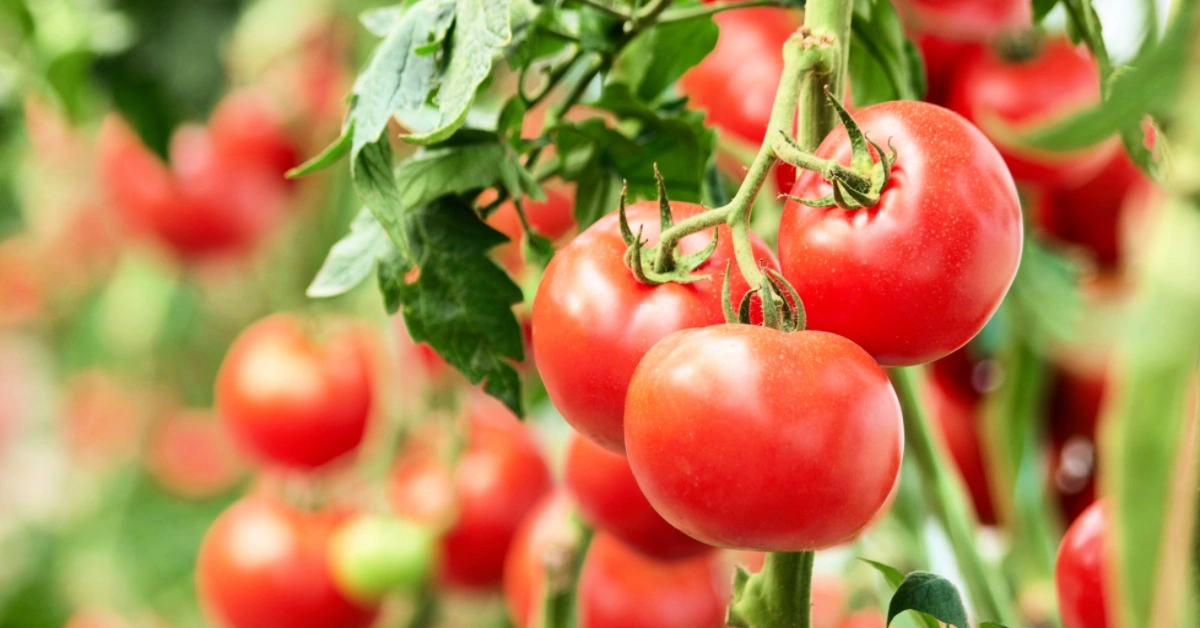As gardening season hits full swing in 2025, tomato lovers across Canada and beyond are seeking new ways to maximize the health, yield, and taste of their homegrown crops. According to the Royal Horticultural Society (RHS) and gardening experts from Obsessed Lawns, companion planting—a time-tested method of planting specific crops together—may be the most effective natural trick yet for thriving tomato plants.
Table of Contents
What is Companion Planting?
Companion planting involves growing different plants close together to help each other grow. Some companions improve flavor, others repel pests, and a few boost nutrient availability in the soil. For tomato plants, certain neighbors not only protect them from destructive insects but also enhance their flavor and overall growth.
The Top 3 Plants to Grow Near Tomatoes for Maximum Benefits
1. Basil – The Flavor Enhancer
Basil and tomatoes are a match made in garden heaven—and the kitchen. Not only does basil repel pests such as thrips and whiteflies, but it also boosts the flavor of tomatoes when grown nearby. Their root systems interact in ways that benefit both plants, and basil’s essential oils act as natural bug deterrents.
Bonus Tip: Pick basil leaves regularly to encourage fuller, bushier growth and more flavor-packed tomatoes.
2. Marigolds – The Pest Blockers
Marigolds are known for their bright blooms, but they offer much more than aesthetic value. These cheerful flowers release a scent that repels nematodes, aphids, and whiteflies, all of which are common enemies of tomatoes. Certain varieties, like French marigolds, are especially effective in creating a protective barrier around your vegetable garden.
Bonus Tip: Interplant marigolds between tomato rows to act as a natural pest perimeter.
3. Nasturtiums – The Decoy Defenders
Nasturtiums work differently than basil and marigolds. Rather than repel pests, they attract aphids and whiteflies away from tomato plants, acting as a “trap crop.” This keeps the pests off your tomatoes while sacrificing only a few nasturtium leaves. As a bonus, nasturtium flowers are edible and add a peppery flavor to summer salads.
Bonus Tip: Grow nasturtiums at the edges of your tomato bed to draw pests outward.
Other Compatible Neighbors for Tomatoes
In addition to the top three, here are other great companions for your tomato garden:
- Peppers – Share similar soil and watering needs.
- Spinach & Lettuce – Low-growing, shade-loving crops that thrive in the shade of tall tomato plants.
- Carrots – Help aerate the soil and make good use of underground space.
- Parsley – Adds vigor and growth support, similar to basil.
- Asparagus & Horseradish – Can boost disease resistance in nearby plants.
Why Companion Planting Works
The benefits of companion planting go beyond pest control. Some plants improve soil health, offer ground cover to reduce weeds, and even release chemicals that strengthen their neighbors. The RHS notes that such plant pairings can “give added health” and increase overall productivity.
What to Avoid Planting Near Tomatoes
Just as some plants help tomatoes thrive, others can hinder their growth. Avoid planting tomatoes near:
- Corn – Attracts tomato worms.
- Potatoes – Can increase the risk of blight transmission.
- Fennel – Releases compounds that inhibit tomato growth.
- Cabbage family vegetables (e.g., broccoli, cauliflower) – Compete for similar nutrients and space.
Final Gardening Tip for 2025: Watch for Disease & Try Hardy Varieties
Even with companion planting, it’s essential to monitor your tomatoes for signs of disease such as leaf curl, blight, or fungal spots. If you’re prone to these issues or live in a high-humidity region, opt for disease-resistant varieties like Crimson Crush, which is gaining popularity among Canadian gardeners for its resilience and rich taste.
Conclusion: Grow Smarter, Not Harder This Gardening Season
The 2025 gardening trend is all about working with nature. By planting basil, marigolds, and nasturtiums next to your tomatoes, you’ll not only protect your plants naturally but also unlock richer flavor, stronger growth, and a more bountiful harvest. Whether you’re a beginner gardener or a seasoned green thumb, companion planting is a simple yet powerful technique worth mastering this season.

2 thoughts on “Tomato Companion Planting 2025: Grow Better, Tastier Tomatoes with These 3 Smart Pairings”